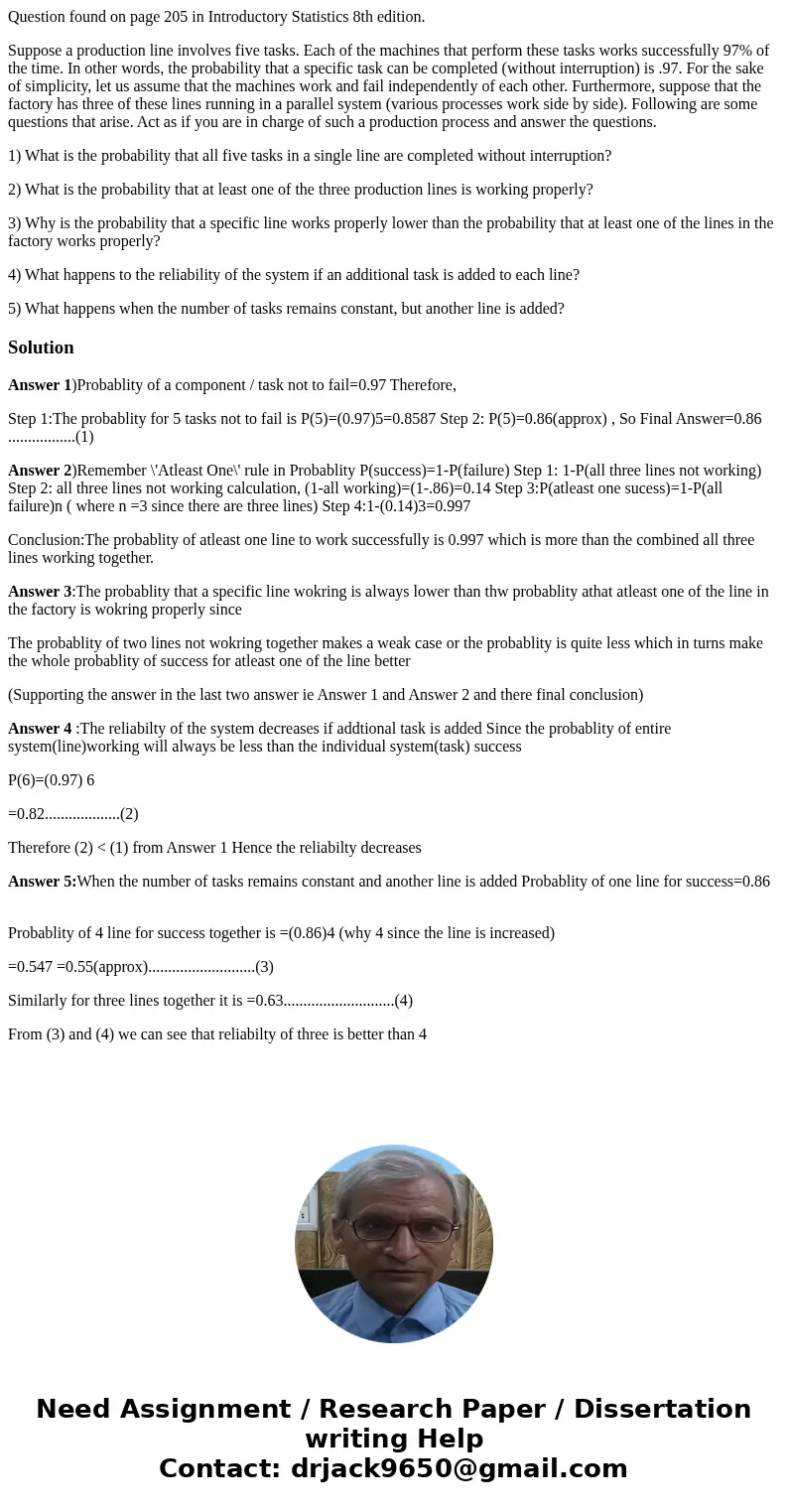Question found on page 205 in Introductory Statistics 8th ed
Question found on page 205 in Introductory Statistics 8th edition.
Suppose a production line involves five tasks. Each of the machines that perform these tasks works successfully 97% of the time. In other words, the probability that a specific task can be completed (without interruption) is .97. For the sake of simplicity, let us assume that the machines work and fail independently of each other. Furthermore, suppose that the factory has three of these lines running in a parallel system (various processes work side by side). Following are some questions that arise. Act as if you are in charge of such a production process and answer the questions.
1) What is the probability that all five tasks in a single line are completed without interruption?
2) What is the probability that at least one of the three production lines is working properly?
3) Why is the probability that a specific line works properly lower than the probability that at least one of the lines in the factory works properly?
4) What happens to the reliability of the system if an additional task is added to each line?
5) What happens when the number of tasks remains constant, but another line is added?
Solution
Answer 1)Probablity of a component / task not to fail=0.97 Therefore,
Step 1:The probablity for 5 tasks not to fail is P(5)=(0.97)5=0.8587 Step 2: P(5)=0.86(approx) , So Final Answer=0.86 .................(1)
Answer 2)Remember \'Atleast One\' rule in Probablity P(success)=1-P(failure) Step 1: 1-P(all three lines not working) Step 2: all three lines not working calculation, (1-all working)=(1-.86)=0.14 Step 3:P(atleast one sucess)=1-P(all failure)n ( where n =3 since there are three lines) Step 4:1-(0.14)3=0.997
Conclusion:The probablity of atleast one line to work successfully is 0.997 which is more than the combined all three lines working together.
Answer 3:The probablity that a specific line wokring is always lower than thw probablity athat atleast one of the line in the factory is wokring properly since
The probablity of two lines not wokring together makes a weak case or the probablity is quite less which in turns make the whole probablity of success for atleast one of the line better
(Supporting the answer in the last two answer ie Answer 1 and Answer 2 and there final conclusion)
Answer 4 :The reliabilty of the system decreases if addtional task is added Since the probablity of entire system(line)working will always be less than the individual system(task) success
P(6)=(0.97) 6
=0.82...................(2)
Therefore (2) < (1) from Answer 1 Hence the reliabilty decreases
Answer 5:When the number of tasks remains constant and another line is added Probablity of one line for success=0.86
Probablity of 4 line for success together is =(0.86)4 (why 4 since the line is increased)
=0.547 =0.55(approx)...........................(3)
Similarly for three lines together it is =0.63............................(4)
From (3) and (4) we can see that reliabilty of three is better than 4

 Homework Sourse
Homework Sourse